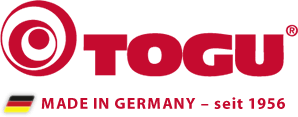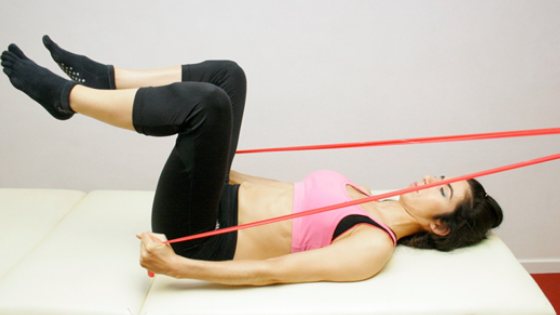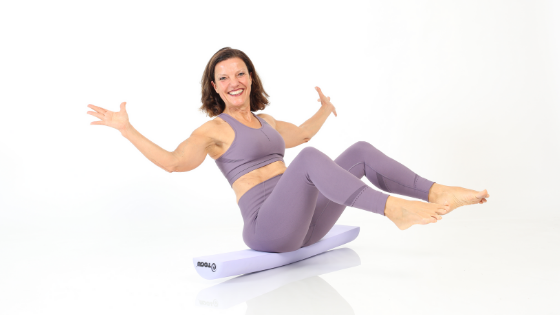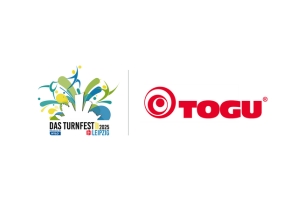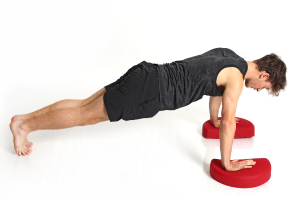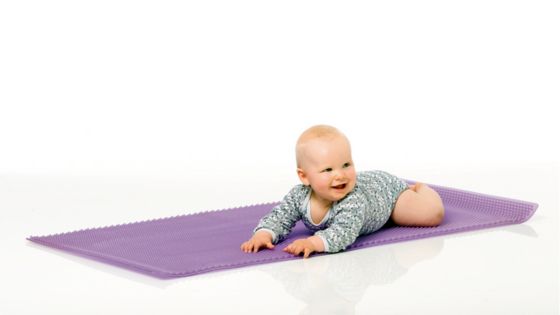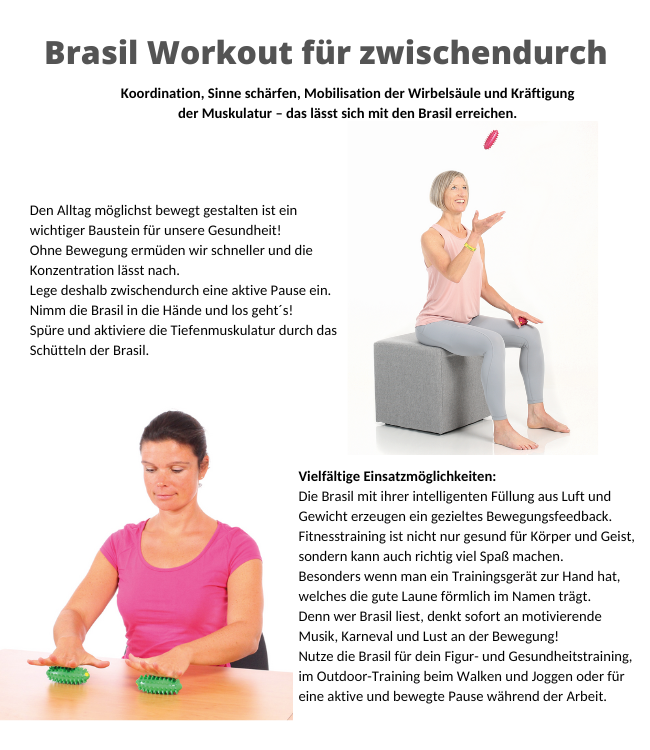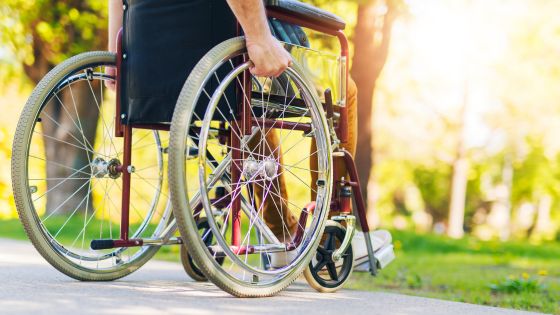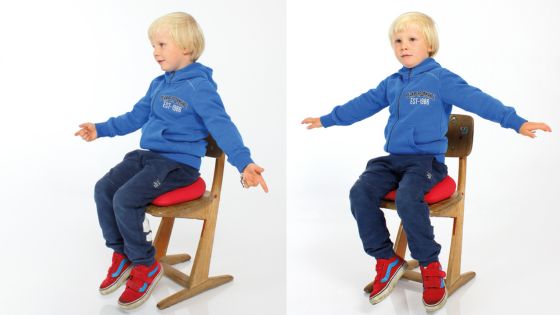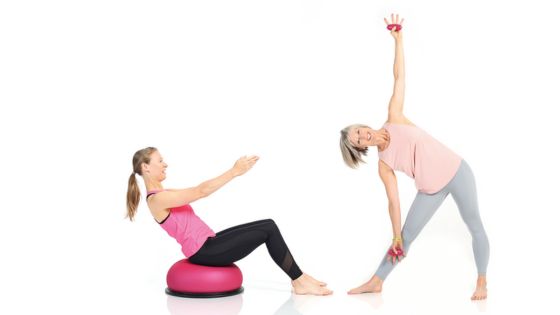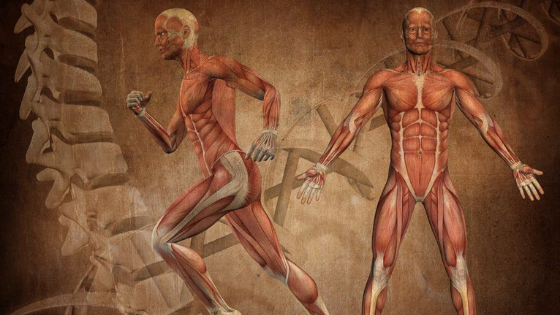
Body axis training – strategies against joint pain
Back, hip and shoulder pain are widespread. The cause often lies in an “imbalance” in the body’s statics.
In this excerpt from her new book, Nici Mende presents strategies to stabilise the body axis in its function and counteract pain in the long term.
What is the body axis?
According to the definition, these are anatomical orientation points around which the “mass” of the body moves.
A direction of movement can thus be divided into different axes or planes. If you look closely, you can see the proximity to the trunk of the body.
Actually, this is our “pivot”, the spine and the pelvis.
Aligning the leg axis
The joints of the extremities also form axes that guide the joints and ensure the health and function of the structures.
Anyone who has had a knee injury knows how important it is to restore the functional leg axis.
If this is not achieved, late consequences of the injury (e.g. arthrosis) usually develop. The alignment of the trunk has a lot to do with the position of the foot, knee and hip joints.
Functional body axis training should therefore always begin with the alignment of these joints.
Moving ligamentous apparatus
Back to the back and the pelvic position. Anyone who studies the anatomy of this region will recognise the variety of muscular and connective tissue layers,
that protect and stabilise the almost “bone-free” abdominal cavity.
Only the vertebral bodies of the lower thoracic and entire lumbar spine are located there as passive, bony support components.
The rest of the abdominal cavity acts as a kind of inflatable body supporting the healthy alignment of the individual vertebral bodies.
Incidentally, they are stored in a very fibre-rich tissue tube that provides the supporting load and movement as long as it experiences sufficient movement and rest.
The movement of these ligamentous structures near the spinal column also supplies the intervertebral discs through spiral-like rotations, bending and stretching movements in all axes.
With sufficient rest, these structures contribute in the long term to compensating for “imbalances” and to maintaining or restoring body symmetry.
Incidentally, it is often precisely these ligament structures that trigger pain.
Local muscular system
Nerves are required for every muscular movement. They make muscular work performance possible. The important task here is: Communication.
Every second, countless receptors (e.g. Golgi tendon organ, muscle spindle…) send out information to cause muscle (re)actions.
Depending on the system to which it belongs, muscle control is voluntary (e.g. controlling the arm to lift a glass) or involuntary/autonomous (e.g. the depth-sensitive alignment of our spine), a kind of muscle tension that we do not notice.
This predominantly autonomous musculature is found close to the trunk of the body. These local muscles cause barely visible body movements, despite great work output, and are difficult to feel. They are the key to our back health. Because if they don’t kick in, there are no metabolism-promoting pulling movements on the ligament and fascia system of the spine and the active stabilisation of the vertebral alignment also suffers.
So it is important to challenge this deep system without overstraining it. Exercises like the one-leg stand activate these rather small muscles.
The control of the transverse abdominal muscle (M. transversus abdominis) should also be mentioned here. Although it does not belong to the autochthonous back muscles (M. erector spinae) any more than the hip flexors (M. psoas) and the quadratic abdominal muscle (M. quadratus abdominis), it is nevertheless part of the team of depth-sensitive muscles.
When they work together efficiently, the result is a well “laced” waist and thus internal support for the torso skeleton.
This tension is also known as “core”, “powerhouse” or “corset tension”. Stand on one leg and test your inner abdominal tension – it will jump right in.
If it does not, the one-leg stand is usually wobbly or not possible at all.
Training the global system functionally
To build up a body system that is active in everyday life, we need the big muscles. They are the “big siblings” that can come to the aid of the small ones.
If we tense them, the result is a good support corset that can carry heavy loads and align our body at will.
However, “loads” is also the keyword for imbalances and misalignments. Our training should be designed close to everyday life with load distributions and balancing force stimuli.
A symmetrically well-executed training helps to progressively learn the functional execution of exercises.
Since the muscle partners in the entire torso wall have direct force connections into the extremities, the position of the shoulder blades, arms and legs, even the feet, is ultimately important in the axial alignment. This is also evident, for example, in the broad back muscle (M. latissimus dorsi).
Its insertion is on the upper arm and there is a contralateral line of force across the gluteus maximus muscle to the tractus tendon (M. gluteus maximus – Tractus iliotibialis) to below the knee.
Here again, there are connections to the shin muscle (M. tibialis anterior), which leads into the foot. So there are many good reasons to train “globally” to centre the axes. A good controlled musculature (local and global) additionally helps to exercise the mentioned inflated body concept.
Here, the abdominal cavity is compressed by the corset-like torso stability and an additional straightening of the spine is ensured.
If the muscles surrounding the abdomen are too weak, this sophisticated concept cannot function.
In the worst case, even painful false moves result.
Integrating myofascia
The connections of the global muscles just described indicate an extensive network of fibrous connective tissue structures.
Fascia and muscle fascia have become an integral part of modern training science and it is worthwhile to pay attention to these structures in axle training as well.
The collagen network requires end-grade tensile loads to fully develop its function. These can be fine as well as rather flowing or can be carried out with secured jerky movements. Secured here means that there should be spine-aligning core tension.
If, for example, we practise a bent-over, laid-back torso alignment (back extension), springy finger-floor movements, including various knee and foot positions (possibly underlaid), would be useful as preparation. In this way we not only promote the structural metabolism, but also prepare the functional gliding ability of the working muscles.
Author: Nici Mende
Book recommendation: Nici Mende: Praktische funktionelle Anatomie
